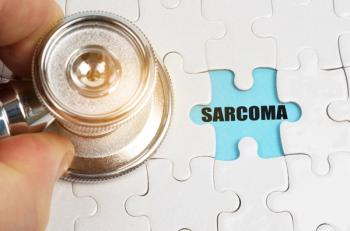
- Managed Healthcare Executive July 2019 Issue
- Volume 29
- Issue 7
The First Hep C Value-Based Bundled Payment Plan
Care1st Health Plan Arizona recently unveiled what it calls the first-ever U.S. Medicaid value-based agreement for hep C treatment. Here’s why they say other plans should take notice.
More than 3.2 million Americans live with chronic hepatitis C,
While
The subscription-based models are not the only new payment models. WellCare, through
While other bundled payment models exist, Care1st says this is the first Medicaid plan in the United States to offer bundled payments as part of a
Tackling hep C
Satya Sarma, MD, chief medical officer at Care1st Health Plan Arizona says Care1st started the program to address two issues: a high prevalence of hepatitis C in Arizona (the Arizona Department of Health Services estimates over
Sarma also says that issues related to
“Our current fee-for-service models simply don’t incentivize these activities, do not drive innovation or efficiency, and do not reward providers for quality care, instead encouraging volume over value,” says Sarma. “We needed a payment model that allows physicians flexibility in how they treat patients while driving efficiency.”
Related article:
Sarma says the Care1st program is flexible enough to allow providers to accommodate their patients’ needs and also helps drive results-the full bundled payment is dependent on a cure, defined by full virus eradication. This way, providers are directly responsible for managing medication adherence.
Sarma also stressed that the new program will help “empower healthcare practitioners to think outside of the box and innovate care protocols to break down barriers that prevent hepatitis C patients from receiving and complying with the treatment they need to regain their health.”
The yearlong initiative will involve a partnership with Maricopa Integrated Health System (MIHS) hepatologists at the Maricopa Medical Center. That partnership will involve 100 patients with hepatitis C, who will be given anti-viral medications. The medication will be taken daily for eight to 12 weeks.
After the medication is administered, follow ups will ensure medication adherence and successful treatments. The patients will then continue to be followed at Care1st’s Hepatitis C Center of Excellence (which treats their Medicaid population). Following results at the one-year mark, Care1st will then decide whether to continue and/or expand the program.
Sarma says that because treatment for hepatitis C takes several months, compliance within the Medicaid population could be one of the biggest challenges.
To tackle this, Sarma says Care1st will provide integrated access to social supports. One of these is a WellCare program that connects members with case managers. There is also the Community Connections Help Line, which gives members access to local social support resources.
This way, Sarma says, “we can remove obstacles that may prevent full adherence to the program. … Now, physicians will not only be able to achieve a cure for most patients who comply with their treatment protocol, but they’ll be able to address any social challenges that might be affecting a patient and their treatment, like transportation, housing, or food.”
The physician involvement question
Any successful value-based plan
Sarma says that from the start, Care1st actively involved physicians in discussions about the plan. “We wanted to leverage their clinical expertise and incorporate their input into the design of our model. We wanted to understand the scope of the clinical workflows as well as address any concerns that arose about a different payment model.”
Care1st initially partnered with MIHS and the physicians at District Medical group. The leaders at these organizations, Sarma says, “were willing to think outside the box with us. As we talked through the process, these physicians engaged with us actively, and helped to drive the process forward with the able support of MIHS administration.”
Beyond those initial endeavors, Sarma says Care1st expects to have ongoing relationships with providers. Part of that will involve data sharing and case discussions and supporting them with care management and data analytics.
Upend the healthcare table
What can this program teach other healthcare leaders?
Sarma says that lessons learned from this program may be valuable not only to other hepatitis C programs, but also to healthcare more broadly.
“Healthcare is a fragmented industry,” says Sarma. “Innovations and new technology are slow to penetrate, and costs continue to rise, without corresponding improvement in patient or provider satisfaction.
“Current payment methodologies contribute to this reality. So, when you don’t like the way the table is set, one option is to turn over the table. We believe the outcomes-based bundled payment methodology, in conjunction with the holistic treatment model our providers are developing, is an opportunity to reset the table, so we can solve the problems we’ve recognized in our industry.”
Nicholas Hamm is an editor with Managed Healthcare Executive
Articles in this issue
over 6 years ago
How Machine Learning Is Revolutionizing Healthcareover 6 years ago
The Latest Autoimmune Disease Treatment Advancesover 6 years ago
3 Benefits of E-Prescribingover 6 years ago
Why Executive Compensation Drives Value-Based Care Transitionsover 6 years ago
Value-Based Care: Lessons Learnedover 6 years ago
Peptic Ulcer Disease Drug Pipeline: What You Need to Knowover 6 years ago
Do New Executive Healthcare Roles Make Sense?Newsletter
Get the latest industry news, event updates, and more from Managed healthcare Executive.
















































